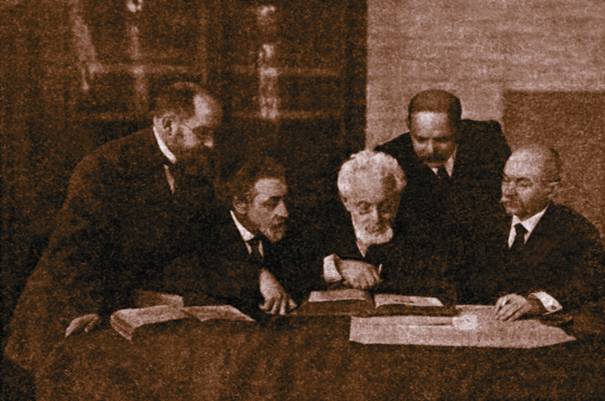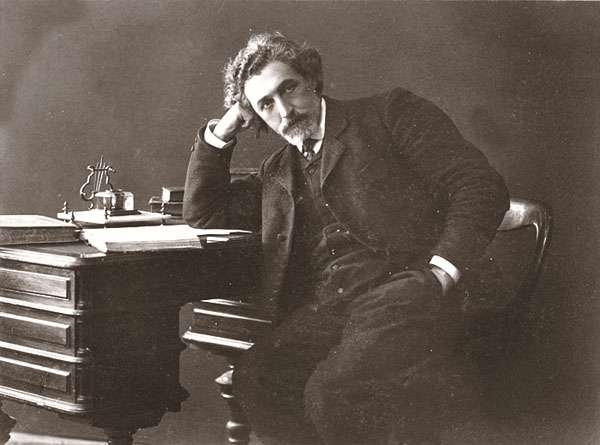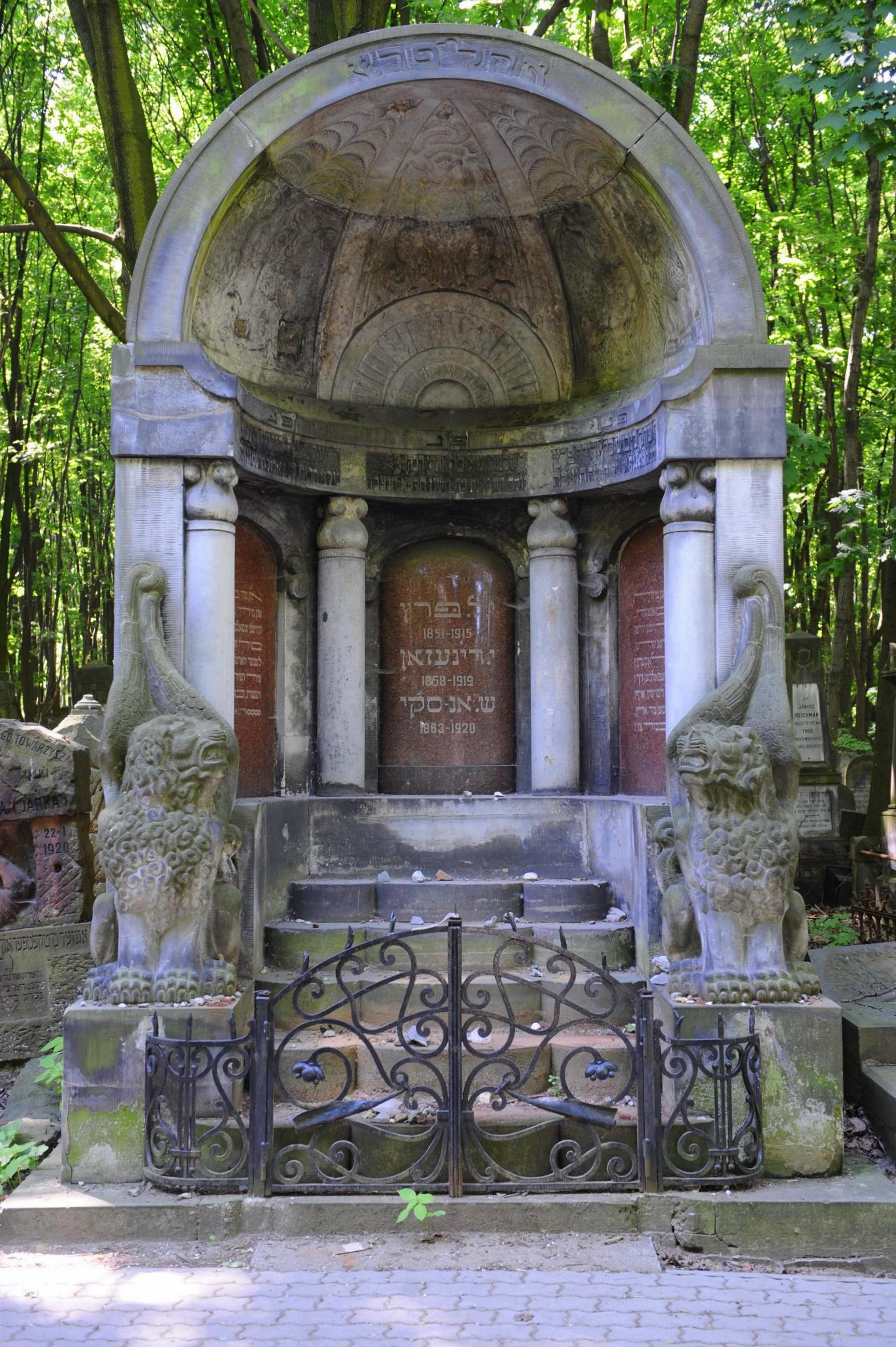Solomon Anski on:
[Wikipedia]
[Google]
[Amazon]
Shloyme Zanvl Rappoport (1863 – November 8, 1920), known by his pseudonym S. Ansky (or An-sky), was a
 S. Ansky was born in
S. Ansky was born in
 Under the influence of the Russian
Under the influence of the Russian
 Initially he wrote in Russian, but from 1904 he became known mainly as a
Initially he wrote in Russian, but from 1904 he became known mainly as a
Jewish Heritage Online article on Ansky
archived from th
on 2016-01-01
YIVO Encyclopedia of Jews in Eastern Europe
{{DEFAULTSORT:Ansky, S. 1863 births 1920 deaths People from Chashniki People from Lepelsky Uyezd Jews from the Russian Empire Belarusian Jews Narodniks Bundists Socialist Revolutionary Party politicians Russian Constituent Assembly members Yiddish theatre Yiddish-language playwrights Jewish folklorists 20th-century pseudonymous writers
Jewish
Jews ( he, יְהוּדִים, , ) or Jewish people are an ethnoreligious group and nation originating from the Israelites Israelite origins and kingdom: "The first act in the long drama of Jewish history is the age of the Israelites""The ...
author, playwright, researcher of Jewish folklore, polemicist, and cultural and political activist. He is best known for his play '' The Dybbuk'' ''or Between Two Worlds'', written in 1914.
In 1917, after the Russian Revolution
The Russian Revolution was a period of Political revolution (Trotskyism), political and social revolution that took place in the former Russian Empire which began during the First World War. This period saw Russia abolish its monarchy and ad ...
, he was elected to the Russian Constituent Assembly
The All Russian Constituent Assembly (Всероссийское Учредительное собрание, Vserossiyskoye Uchreditelnoye sobraniye) was a constituent assembly convened in Russia after the October Revolution of 1917. It met fo ...
as a Social-Revolutionary deputy.
Biography
 S. Ansky was born in
S. Ansky was born in Chashniki
Chashniki ( be, Чашнікі, Čašniki, russian: Чáшники, pl, Czaśniki, lt, Čašnikai) is a town in Vitebsk Region, Belarus, famous for the Battle of Ula during Livonian War and Battle of Czasniki that took place during the Frenc ...
, Vitebsk Governorate
Vitebsk Governorate (russian: Витебская губерния, ) was an administrative unit ( guberniya) of the Russian Empire, with the seat of governorship in Vitebsk. It was established in 1802 by splitting the Byelorussia Governorate and ...
, Russian Empire
The Russian Empire was an empire and the final period of the Russian monarchy from 1721 to 1917, ruling across large parts of Eurasia. It succeeded the Tsardom of Russia following the Treaty of Nystad, which ended the Great Northern War. ...
(now Belarus
Belarus,, , ; alternatively and formerly known as Byelorussia (from Russian ). officially the Republic of Belarus,; rus, Республика Беларусь, Respublika Belarus. is a landlocked country in Eastern Europe. It is bordered by R ...
), and died in Otwock, Poland
Poland, officially the Republic of Poland, is a country in Central Europe. It is divided into 16 administrative provinces called voivodeships, covering an area of . Poland has a population of over 38 million and is the fifth-most populous ...
on November 8, 1920.
Ethnographic work
 Under the influence of the Russian
Under the influence of the Russian narodnik
The Narodniks (russian: народники, ) were a politically conscious movement of the Russian intelligentsia in the 1860s and 1870s, some of whom became involved in revolutionary agitation against tsarism. Their ideology, known as Narodism, ...
movement, Ansky became interested in ethnography
Ethnography (from Greek ''ethnos'' "folk, people, nation" and ''grapho'' "I write") is a branch of anthropology and the systematic study of individual cultures. Ethnography explores cultural phenomena from the point of view of the subject o ...
, as well as socialism, and became a political activist. Between 1911 and the outbreak of World War I
World War I (28 July 1914 11 November 1918), often abbreviated as WWI, was one of the deadliest global conflicts in history. Belligerents included much of Europe, the Russian Empire, the United States, and the Ottoman Empire, with fightin ...
in 1914, he headed ethnographic expeditions to various Jewish towns of Volhynia
Volhynia (also spelled Volynia) ( ; uk, Воли́нь, Volyn' pl, Wołyń, russian: Волы́нь, Volýnʹ, ), is a historic region in Central and Eastern Europe, between south-eastern Poland, south-western Belarus, and western Ukraine. Th ...
and Podolia
Podolia or Podilia ( uk, Поділля, Podillia, ; russian: Подолье, Podolye; ro, Podolia; pl, Podole; german: Podolien; be, Падолле, Padollie; lt, Podolė), is a historic region in Eastern Europe, located in the west-central ...
, composing a detailed ethnographic questionnaire of more than 2000 questions.
Ansky's ethnographic collections were locked away in Soviet vaults for years, but some material has come to light since the 1990s. The State Ethnographic Museum at St. Petersburg holds a good deal of it.Tracing An-sky: Jewish Collections from the State Ethnographic Museum in St. Petersburg, Amsterdam 1992 Some of his vast collection of cylinder recordings made on these expeditions have been transferred to CD as well.Materials of J. Engel Ethnographic Expedition 1912 (The Historic Collection of Jewish Music 1912-1947, vol. 1) (Kiev: National Academy of Sciences of Ukraine; Vernadsky National Library of Ukraine; Institute for Information Recording, 2001)
His ethnographic report of the deliberate destruction of Jewish communities by the Russian army in the First World War, ''The Enemy at His Pleasure: A Journey Through the Jewish Pale of Settlement During World War I,'' has become a major source in the historiography of the war's impact on civilian populations.
Literary career
Yiddish
Yiddish (, or , ''yidish'' or ''idish'', , ; , ''Yidish-Taytsh'', ) is a West Germanic language historically spoken by Ashkenazi Jews. It originated during the 9th century in Central Europe, providing the nascent Ashkenazi community with a ver ...
author.
He is best known for his play '' The Dybbuk'' or ''Between Two Worlds'', written in 1914. The play was first staged in the Elyseum Theatre in Warsaw
Warsaw ( pl, Warszawa, ), officially the Capital City of Warsaw,, abbreviation: ''m.st. Warszawa'' is the capital and largest city of Poland. The metropolis stands on the River Vistula in east-central Poland, and its population is officia ...
, on December 9, 1920, one month (at the end of the 30-day mourning period) after the author's death. It was subsequently translated into a dozen or more languages and performed thousands of times all over the world. It is still being produced, along with numerous adaptations, as well as operas, ballets, and symphonic suites. (For example, in 2011 there were seven different productions.) It is considered the jewel of the Jewish theatre. In the early years ''The Dybbuk'' was considered so significant that parodies of it were written and produced.
Although ''The Dybbuk'' is Ansky’s best-known work, he published many works of literature, politics and ethnography. His ''Collected Works'', which do not include all his writings, comprise fifteen volumes. Ansky wrote a number of other plays, four of which are included in this collection, long out of print. One (''Day and Night'') is, like ''The Dybbuk'', a Hasidic Gothic story. The other three plays have revolutionary themes, and were originally written in Russian: ''Father and Son'', ''In a Conspiratorial Apartment'', and ''The Grandfather''. All four have recently been republished in a bilingual Yiddish-English edition.''S. An-sky. Four Plays. Bilingual Edition,'' tr. Fernando Peñalosa. Tsiterboym Books, 2013.
Ansky was also the author of the song ''Di Shvue
"" ( yi, links=no, די שבֿועה, literally: "The Oath"; also known as "") was written by S. Ansky in 1902. This Yiddish song became the anthem of the socialist, General Jewish Labour Bund in the early 1900s.http://www.stanford.edu/class/hebre ...
'' (The Oath), which became the anthem of the Jewish Socialist Bund party. He was the author of the poem (later made into a song) "In Zaltsikn Yam
In Zaltsikn Yam (In the Salty Sea, yi, אין זאַלטציקן ים) also known as In Zaltsikn Yam Fun Di Mentshleche Trern (In the Salty Sea of Human Tears, yi, אין זאַלטציקן ים פֿון מענשליכע טרערן), or Tsum Bun ...
" (In the Salty Sea), which was also dedicated to the Bund.
See also
* Yiddish theatreReferences
10. Gabriella Safran, Wandering Soul: The Dybbuk's Creator, S. An-sky (Harvard University Press, 2010)Further reading
*Shmuel Werses.S. An-ski's "Between Two Worlds' (The Dybbuk): A Textual History." in Studies in Yiddish Literature and Folklore. Jerusalem: Hebrew University of Jerusalem, 1986 * Gabriella Safran and Steven Zipperstein (ed.): ''The worlds of S. An-sky. A Russian intellectual at the turn of the century.'' Stanford University Press, Stanford, Cal. 2006, * Mlotek, Eleanor G. '' S. Ansky : (Shloyme-Zanvl Rappoport) 1863-1920 : His Life and Works : Catalog of an Exhibition.'' ew York YIVO Institute for Jewish Research, 1980. OCLC 10304171 * Vladislav Ivanov. S. An-sky, Evgeny Vakhtangov and The Dybbuk // The worlds of S. An-sky. A Russian Jewish Intellectual at the Turn of the Century / Ed. by Gabriella Safran and Steven J. Zipperstein. California, Stanford. Stanford University Press, 2006. P. 252–265, 480–481. * S. An-sky. Between Two Worlds (The Dybbuk): Censored Variant. Introduction by Vladislav Ivanov // The worlds of S. An-sky. A Russian Jewish Intellectual at the Turn of the Century / Ed. by Gabriella Safran and Steven J. Zipperstein. California, Stanford. Stanford University Press, 2006. P. 374–436.External links
Jewish Heritage Online article on Ansky
archived from th
on 2016-01-01
YIVO Encyclopedia of Jews in Eastern Europe
{{DEFAULTSORT:Ansky, S. 1863 births 1920 deaths People from Chashniki People from Lepelsky Uyezd Jews from the Russian Empire Belarusian Jews Narodniks Bundists Socialist Revolutionary Party politicians Russian Constituent Assembly members Yiddish theatre Yiddish-language playwrights Jewish folklorists 20th-century pseudonymous writers